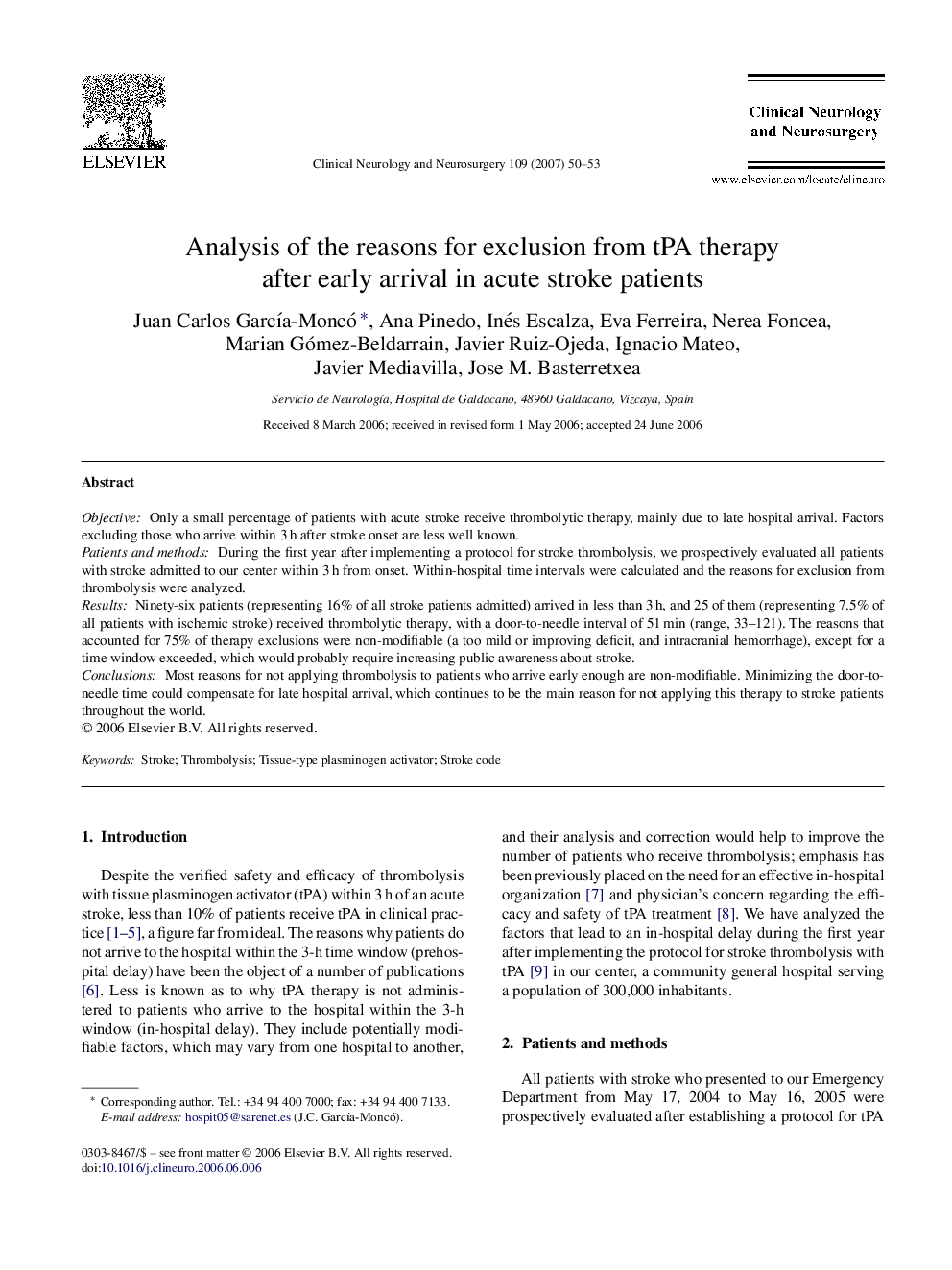| کد مقاله | کد نشریه | سال انتشار | مقاله انگلیسی | نسخه تمام متن |
|---|---|---|---|---|
| 3042068 | 1184799 | 2007 | 4 صفحه PDF | دانلود رایگان |

ObjectiveOnly a small percentage of patients with acute stroke receive thrombolytic therapy, mainly due to late hospital arrival. Factors excluding those who arrive within 3 h after stroke onset are less well known.Patients and methodsDuring the first year after implementing a protocol for stroke thrombolysis, we prospectively evaluated all patients with stroke admitted to our center within 3 h from onset. Within-hospital time intervals were calculated and the reasons for exclusion from thrombolysis were analyzed.ResultsNinety-six patients (representing 16% of all stroke patients admitted) arrived in less than 3 h, and 25 of them (representing 7.5% of all patients with ischemic stroke) received thrombolytic therapy, with a door-to-needle interval of 51 min (range, 33–121). The reasons that accounted for 75% of therapy exclusions were non-modifiable (a too mild or improving deficit, and intracranial hemorrhage), except for a time window exceeded, which would probably require increasing public awareness about stroke.ConclusionsMost reasons for not applying thrombolysis to patients who arrive early enough are non-modifiable. Minimizing the door-to-needle time could compensate for late hospital arrival, which continues to be the main reason for not applying this therapy to stroke patients throughout the world.
Journal: Clinical Neurology and Neurosurgery - Volume 109, Issue 1, January 2007, Pages 50–53